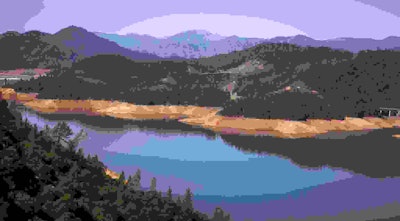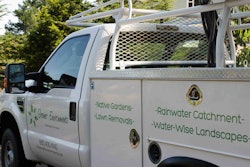 The low water levels of Shasta Lake in 2014 were noticeable. The reservoir has experienced heavy rainfall this year putting it at one of the highest levels in decades.
The low water levels of Shasta Lake in 2014 were noticeable. The reservoir has experienced heavy rainfall this year putting it at one of the highest levels in decades.Photo: psyberartist/Flickr
What has been obvious to Californians for a while has now been made official when Gov. Jerry Brown declared the drought was over on Friday, April 7.
With his declaration, Brown lifted his emergency order for the state, except for the counties Fresno, Kings, Tulare and Tuolumne due to their wells remaining drained.
The State Water Resources Control Board will continue to require water agencies to report on monthly water use and wasteful water practices, such as hosing down sidewalks, will remain prohibited.
“The drought emergency is over, but the next drought could be around the corner,” Brown said in a statement. “Conservation must remain a way of life.”
While reservoirs like Shasta Lake and San Luis Reservoir are nearly full, the groundwater aquifers in Central Valley remain woefully diminished.
Farmers had to pump more groundwater to make up for water lacking elsewhere and in 2014 the state passed its first law regulating groundwater pumping, but it doesn’t take effect until 2020.
“Our groundwater supplies have been decimated during the drought and we know it will take several years, if not longer, to replenish what we’ve lost,” Tracey Quinn with the Natural Resources Defense Council told The Sacramento Bee. “In some places we know we’ve lost the (storage) capacity of some of those aquifers, we’ve lost it for good.”
Droughts are nothing new to the state and it has often developed methods to save water, like in the late 80s when rebates were offered for purchasing water-saving appliances. The 2015 mandatory 25 percent cut in water usage prompted water districts to look for another program that could conserve water and they turned to turf rebates.
Soon withered lawns were replaced with succulents and native plants more adjusted to the harsh drought.
“There’s a societal change in our attitudes – not just about watering use but what makes for a beautiful outdoor ornamental landscape that’s part and parcel of a major mind-set shift for many Californians,” Felicia Marcus, chairwoman of the State Water Resources Control Board, told The Los Angeles Times.
Although the regulations have been cut back, Californians have continued to conserve and reduced their water usage by 25.1 percent in February.
“I don’t think people are going to unlearn what they learned about their lawns,” Marcus told USA Today. “Let’s see how it goes, but I think folks have shown so far this year that they’ll keep up a reasonable level.”










